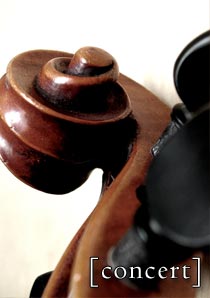Postcards from a Blue Planet
| Year Composed: | 2018 |
| Instrumentation: | fl/a.fl/picc, cl/bcl, bsn |
| Duration | 20 minutes |
| I | Prologue |
| II | Polar Mysteries |
| III | Rivers and Waterfalls |
| IV | Desert Blues |
| V | Song of the Mountains |
| VI | Of Birds and Beasts |
| VII | An Ocean of Wonders |
Program Notes
Composed for the Arts and Minds Trio as part of the Niagara Symphony Orchestra's educational outreach program, Postcards from a Blue Planetis a love letter to our home planet that takes the listener on a musical tour of Earth and its diverse biospheres. The purpose of the work is threefold: to expose students to various musical techniques (including motivic threads and their transformations, structural and narrative considerations, unusual textures and sonic colours, and so on), to raise awareness of the beauty and fragility of the natural world, and to foster an appreciation for the relationship between music and visual imagination. Each of its seven movements is an aural 'postcard' -- that is, a brief, evocative snapshot of a particular environment, one that is musical rather than visual in nature. The composition as a whole includes a wide range of musical styles that serve as a metaphor for the staggering variation of life.
Ultimately, Postcards is an invitation to view our astonishing habitat as a precious gift, worth caring for and attending to -- in the hopes that a new generation of young minds will renew humanity's efforts toward sustainability in a rapidly-changing world.
The first postcard ("I. Introduction") introduces the work's primary theme on flute: a melody with a pleasing, naturalistic contour that leaps upward to the dominant (So) before tumbling downward to the dominant an octave below, passing through the first five notes of the major scale while doing so. A more energetic B section develops this melody into a jaunty march. Originally intended to portray the 'temperate' climate zone in a neutral manner, this music, composed from a stylistically familiar vantage point, represents a musical home of sorts -- a place to depart from and to return to.
In the second postcard (II. "Polar Mysteries"), the clarinet weaves an intricate and at times dramatic solo line while the bassoon and flute play long, sustained pitches in static unison. These pedal tones, cast in their extreme registers (high vs. low), are meant to depict the frigidity of the polar climate, while the clarinet's solo suggests the cry of the region's most well-known representative: the endangered polar bear. The movement features the octatonic scale prominently, both in the unison passages and in the clarinet solo itself.
Rather than portraying a particular biosphere, "III. Rivers and Waterfalls" attempts to capture the image and sensation of moving water in a variety of lush environments. At the outset, rapid triplet figures (built mainly on the pentatonic scale) race against one another, flowing and cascading like tributaries and rivulets. Brief motives abound here and there (including a late-movement reference to the main theme from the "Introduction") but the primary impression is one where all three instruments blend together as a unit, surging forward like a revitalizing force of nature.
As the title suggests, "IV. Desert Blues" is the most overtly jazzy of the postcards, and perhaps also the least pictorial. Finger snaps, pitch bends, bluesy licks, a whirlwind flute solo, and a variety of quasi-percussive techniques conjure up the idea of dryness -- but it's dryness with a swagger and a groove.
The heart of Postcards of a Bluet Planet may reside in the fifth movement, "V. Song of the Great Mountain." Gentle, undulating intervals surround a modal variation of the main theme (played by the alto saxophone.) Out of this passage emerges a chorale, somber and sustained, symbolizing the great march of time, and the seemingly permanent features of our world -- mountain ranges, canyons, volcanoes -- whose ages are nearly impossible to fathom. This is followed by a fugal treatment of a new, folk-like theme: a song that unfolds in rich, multi-layered counterpoint, like the voice of the earth itself.
On the other end of the spectrum are the creatures of the earth -- a continual reminder to us that life, in its seemingly infinite variations, can be all-too-brief. "VI. Of Birds and Beasts" begins with a lengthy bassoon solo, followed by a clarinet solo. The musical intervals and rhythms here are more disjunct and dissonant -- reflections of birdsong and other animal vocalizations, in part, but also more generally the chaos that is an inherent part of the natural world. The second half of the movement is wild dance that suggests a predator versus prey scenario. But who is the predator, and who is the prey? While I began this movement with specific creatures in mind, I will leave it to listeners to have the final word.
The final postcard, "VII. An Ocean of Wonders," is a tribute to the teeming marine life that exists on our planet. After an introduction where the players are instructed to sing into their instruments -- an uncomfortable technique that I nonetheless hope will evoke a kind of prayerful awe -- the music launches into a vigorous finale where the main theme is transformed into a Celtic-flavoured gigue, reminiscent of a sea shanty. After a joyous climax, the music returns us to the beginning of the movement, and ends a coda that combines the vocal introduction with the chorale theme from "Song of the Great Mountain."
Sheet Music
- Score & parts available for rental/purchase here.
Commissions and Awards
- Commissioned by the Niagara Symphony Orchestra.

